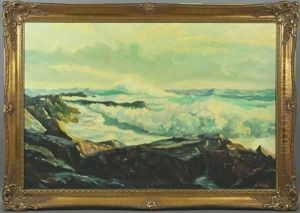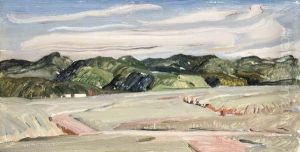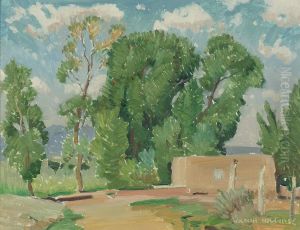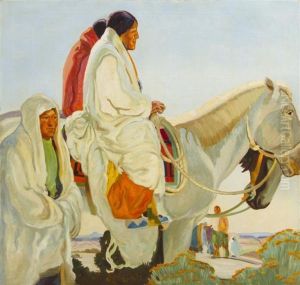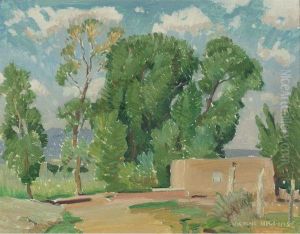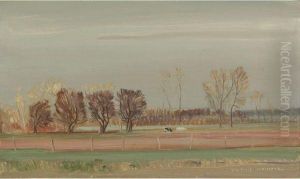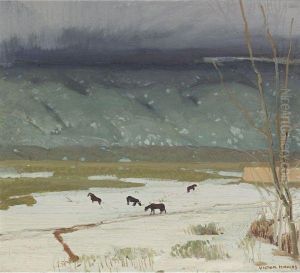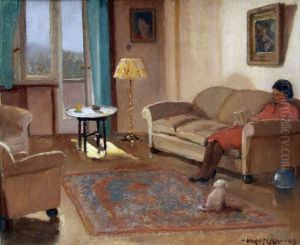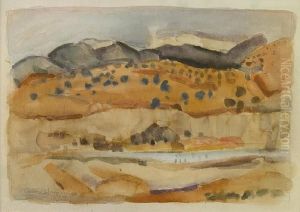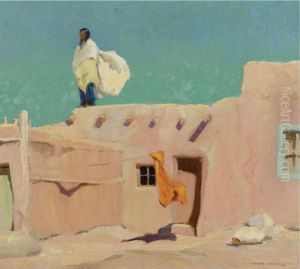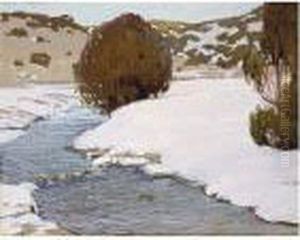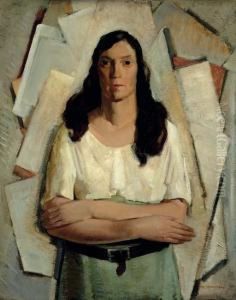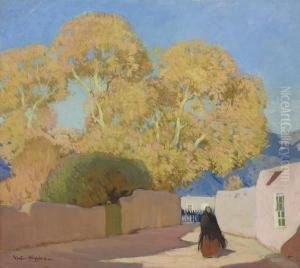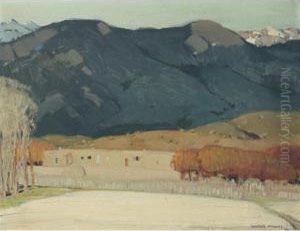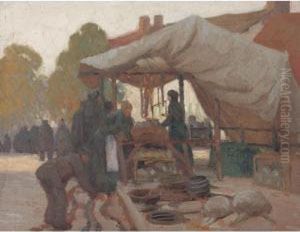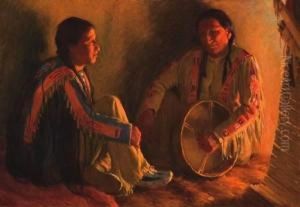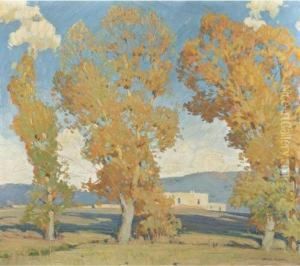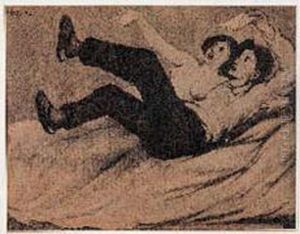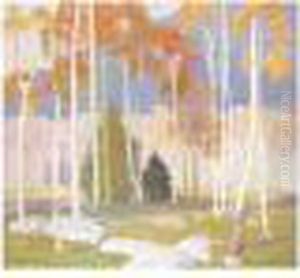Victor, William Higgins Paintings
Victor Higgins was an American painter who was born on June 28, 1884, in Shelbyville, Indiana. He showed a strong interest in art from an early age and pursued his passion for painting throughout his life. Higgins studied at the School of the Art Institute of Chicago and later at the Académie Julian in Paris. His education in Europe exposed him to the works of the Impressionists and Post-Impressionists, which would later influence his painting style.
During his time in Europe, Higgins traveled extensively, absorbing different artistic styles and techniques. Upon returning to the United States, he settled in Taos, New Mexico, becoming an integral member of the Taos Society of Artists. This group was dedicated to capturing the unique landscapes and cultures of the American Southwest, particularly the lives and traditions of the Native American people in the region.
Higgins's work is characterized by its vibrant colors, dynamic compositions, and robust brushwork. He often depicted the dramatic landscapes of New Mexico with a sense of spirituality and reverence, which resonated with both critics and the public. His paintings are considered a vital contribution to early 20th-century American art, particularly in the context of the Taos Art Colony.
During his career, Higgins exhibited his work in various prominent venues, including the Art Institute of Chicago and the National Academy of Design in New York. His paintings are held in numerous public collections, such as the Smithsonian American Art Museum and the Museum of New Mexico.
Victor Higgins continued to paint and contribute to the art community in Taos until his death on August 23, 1949. His legacy is preserved through his artwork, which continues to be celebrated for its unique blend of American subject matter with European artistic techniques. Higgins remains a significant figure in the history of American art, particularly for his contributions to the visual representation of the American Southwest.
